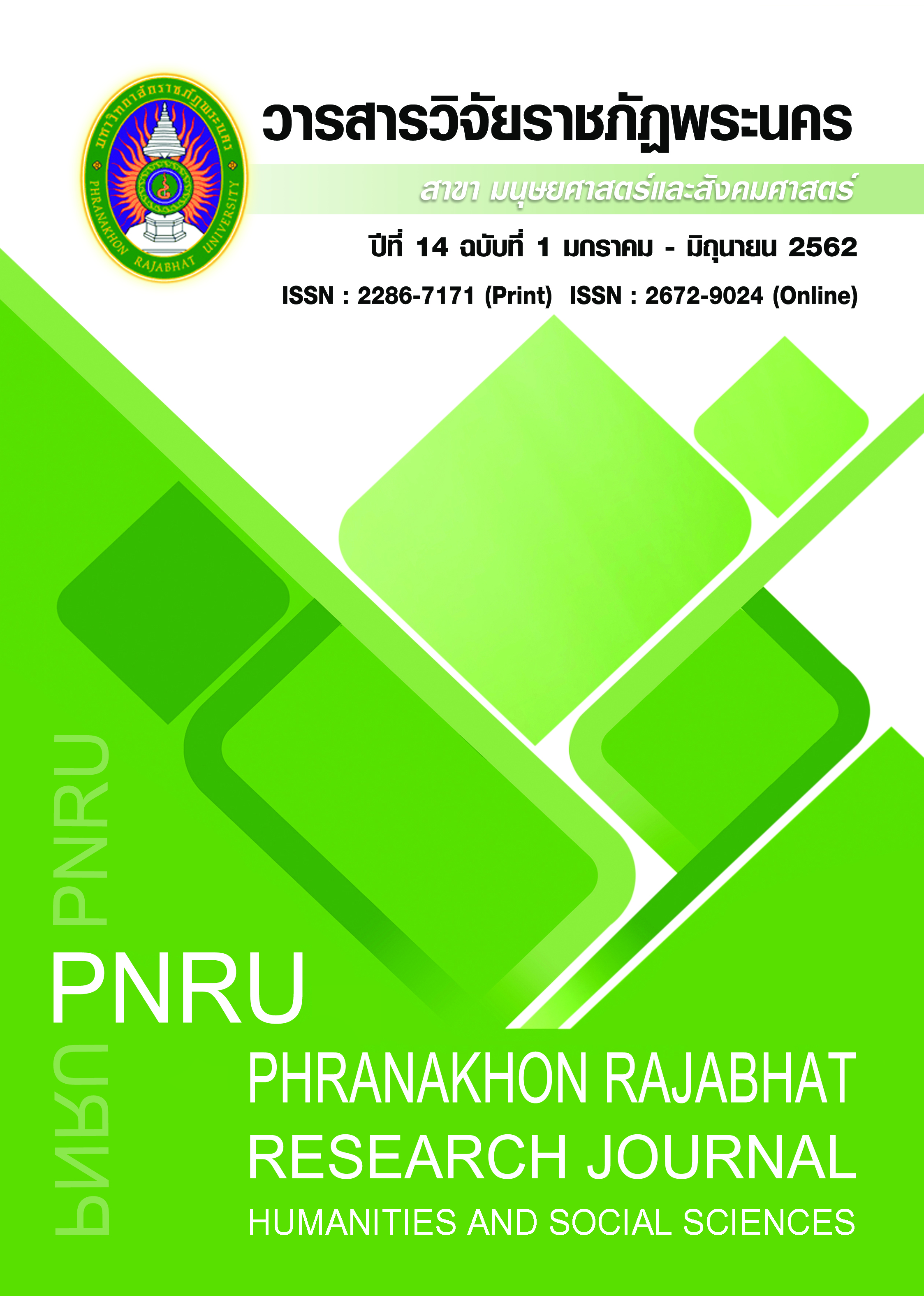LABORATORY INSTRUCTIONAL MODEL TO ENHANCE THINKING SKILL OF FUTURE PROBLEM SOLVING FOR HOME ECONOMICS STUDENTS
Main Article Content
Abstract
The purposes of this research were: 1) to develop a laboratory instructional model to enhance future problem solving thinking skill for home economics students, and 2) to evaluate the effectiveness of the developed instructional model. The research was divided into three phases: 1) A study of theory and home economics laboratory learning management; 2)Development of an instructional model; and 3) Testing the developed instructional model which was evaluated by 6 experts, subjects consisted of 37 third year students home economics program, Phranakhon Rajabhat University, who enrolled in International Food course. The research instruments included an achievement test, a future problem solving evaluation form, a performance evaluation form and a questionnaire of satisfaction towards the instructional model. The research data were statistically analyzed using the mean, standard deviation and t-test for dependent samples.
The results of this study were as follows: 1. The developed instructional model consisted of 5 elements: 1) principles; 2) objectives; 3) instructional model which consisted of four learning steps, that is, theory reviewing, planning and thinking with future problem solving, experiencing, evaluating and problem reflecting; 4)the condition to use the model; and 5) the measurement and evaluation. 2. The evaluation results in a field try-out showed that the developed instructional model was able to use as learning activity. The students’ post-learning results of achievement and future problem solving thinking skill were significantly higher scores than their pre-learning at .01 level, performance skill was at good level and students indicated most satisfaction towards the instructional model (= 4.52, S.D.=0.41).
Article Details
Each publish articles were copyright by Phranakorn Rajabhat University
Any contents which appeared in each articles in the journal were authors personal opinion. It did not relate to Phranakorn Rajabhat University and other instructors in the university. Each authors would take responsibility on their articles. If there are any mistake, the authors will take responsibility themselves
References
Davies, I. K. (1971). The management of learning. NY: McGraw-Hill.
Fitts, P. M. (1964). Perceptual-motor skill learning. NY: Academic Press.
Gagne, R. M. & Medsker, K. L. (1997). The conditions of learning: training applications. NY: Holt, Rinehart and Winston.
Joyce, B. & Weil, M. (2009). Model of teaching. 8th edition. NY: Prentice Hall.
Khammani, T. (2014). Education science: knowledge for efficiently learning process management. 18th edition. Bangkok: Darnsutha Co., Ltd. (in Thai)
NEA’s Doubts & Certainties. (1994). 12 principles for brain-based learning. Retrived February 15, 2015, from www.nea.org/teachexperience.
Office of The Royal Society. (2011). Royal Thai dictionary version 2542BE. Bangkok: Nanmeebooks publication press. (in Thai)
Phaiboonwattanagij, P. (2016). The development of learning achievement and future problem solving using Torrance’s future problem solving model for mathayomsuksa 5 students. Veridian e-journal, Silpakorn University. 9(3), 653-673. (in Thai)
Pongpoka, S. (2015). The development of problem solving thinking ability of mutthayomsuksa 6 students by future problem solving technique and mind mapping. Veridian e-journal, Silpakorn University. 8(2), 1223-1237. (in Thai)
Porntadavit, N. (2002). Perspectives of future home economics in Thailand: a reflection of vision and paradigm from present to future. Doctor of Philosophy, Faculty of Education, Kasetsart University. (in Thai)
Simpson, D. (1972). Teaching physical education: a system approach. Boston: Houghton Mufflin Co.
Thammakittipob, V. (2009). Handout of 01176611 innovation & change process in vocational education. Faculty of Education, Kasetsart University. (in Thai)


